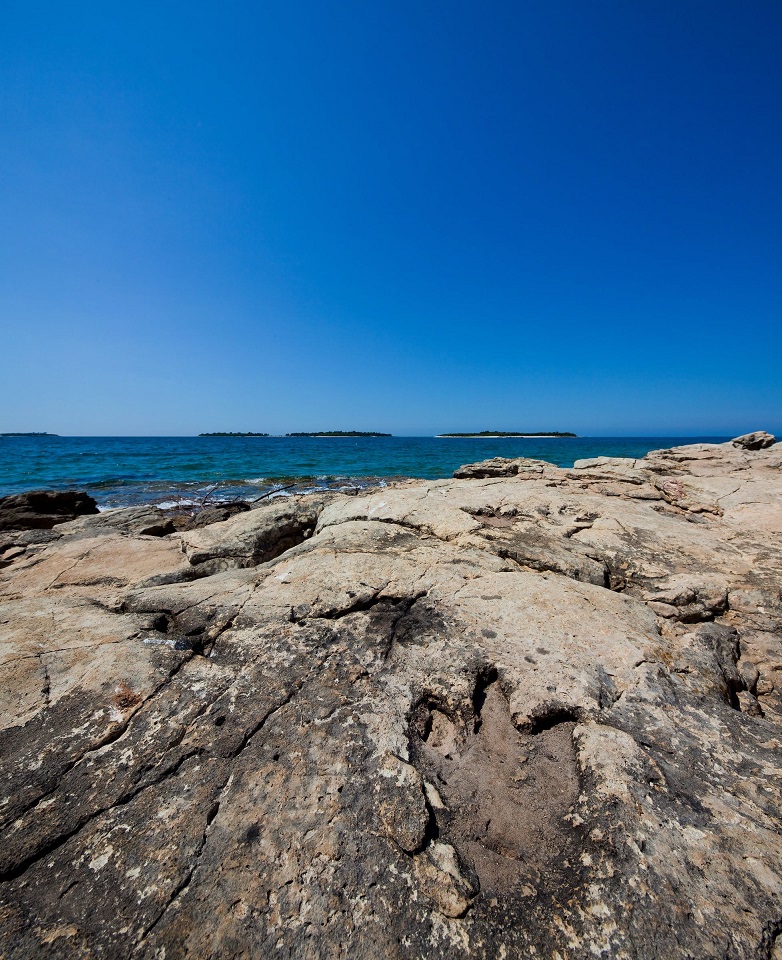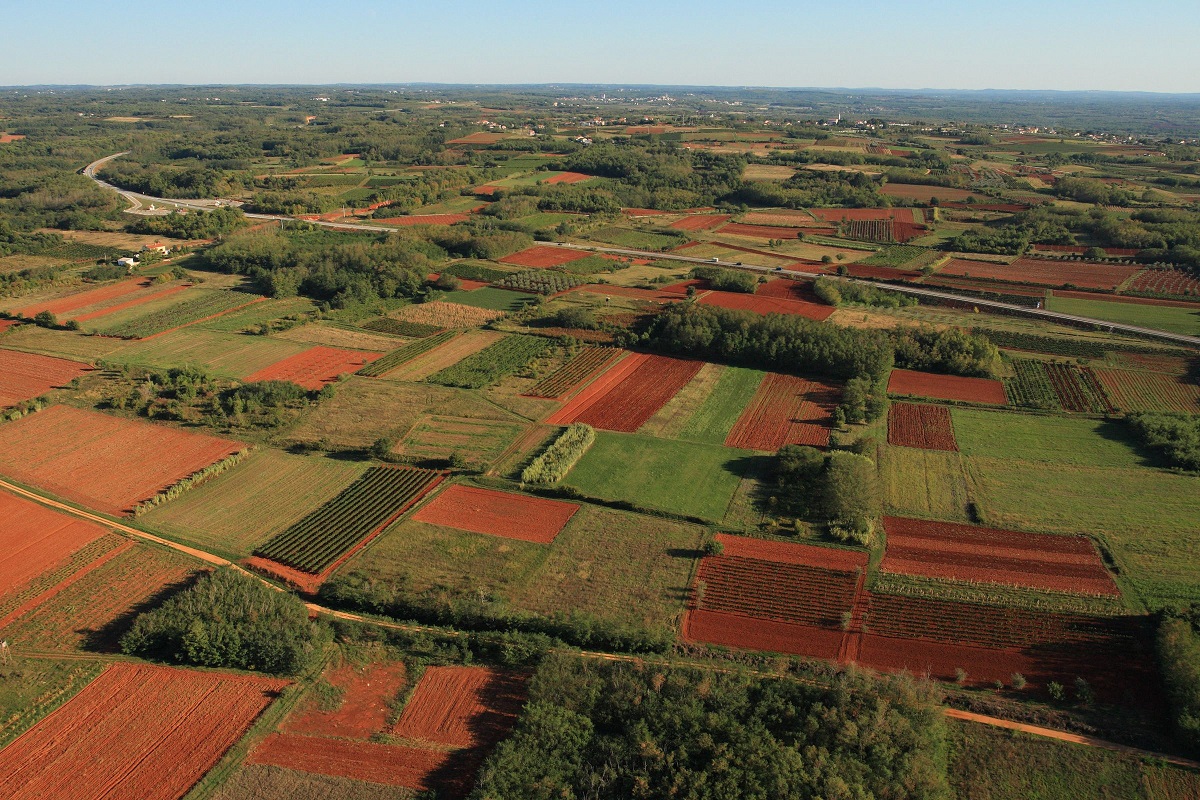Dinosaur Fossils in Croatia and their Locations Declared Protected Part of Nature
April 21, 2021 – A total of 24 dinosaur fossils in Croatia have been declared a protected part of nature, making them the first protected fossil in Croatia.
As Glas Istre reports, the decision to declare dinosaurs and their locations as protected parts of nature were published in the Official Gazette on April 15 and comes into force eight days after its publication, on April 24.
With this proclamation, dinosaur fossils became the first protected fossil in Croatia, significant for their rarity, size, appearance, educational, and scientific significance. Each newly discovered dinosaur fossil and its location will be declared a protected part of nature under the Nature Protection Act.
Brijuni – the first location
The first find in Croatia's territory originates from Brijuni, dating from 1925 when A. Bachofen – Echt spotted traces of dinosaurs on Cape Ploče on Veliki Brijun. Another location in Croatia was also discovered on Veliki Brijun in 1965 on Cape Barban. Today, there is a Dinosaur Park available to the public and a sculpture of theropod dinosaur.
The third site is at Plješivac/Kamik, where fossils were discovered in 1987, and the fourth is at Trstike/Debela Glava, with a site from 2001.
More than 200 dinosaur footprints were found at four sites in Veliki Brijun, which inhabited the area of the future Brijuni Islands in the Mesozoic period. Within this broad period, the Brijuni dinosaur can be placed in the Cretaceous period (145 to 65 million years ago).

Dinosaur footprints on Brijuni / Copyright Romulić and Stojčić
Croatia's territory is part of the paleogeographic unit of the Adriatic-Dinaric carbonate platform. During the Jurassic and Cretaceous periods, sedimentation occurred on the carbonate platform, i.e., ecological conditions enabled the survival and development of dinosaurs.
Poor preservation
The dinosaur populations that inhabited these areas are specific in the morphology and dimensions of the fossil footprints and bones, which differ from the simultaneous findings from other parts of the world. Footprints suggest the presence of sauropod, theropod, and ornithopod dinosaurs.
Fossil footprints and bones have been preserved in Mesozoic limestone deposits. The oldest footprint finds date from the Upper Jurassic period and the youngest from the Upper Cretaceous. A total of 23 sites of dinosaur footprints have been discovered and investigated in Croatia, as well as one site with discovered petrified bones.
Finding dinosaur fossils in Croatia is possible, but the preservation of such finds is small. Therefore, all the findings found so far, but also possibly newly discovered dinosaur fossil finds, have a significant educational and scientific value. These remains are the only witnesses to dinosaurs' lives that can be used in the interpretation and education, and popularization of geo-heritage.
To read more news from Croatia, follow our dedicated page.
Historical Mystery: Dinosaurs Secret to Top Istrian Wine and Olive Oil?
August 30, 2020 – Dinosaurs may have disappeared 65 million years ago, but before that, they lived, multiplied, and died here in Istria for a full 80 million years. Are they the secret to top Istrian wine and olive oil?
As Jutarnji list/Mladen Gerovac writes, it is not possible that dinosaurs haven't left any other, invisible traces in Istria apart from footprints and bones. Even though this has not been scientifically confirmed, the fact that these huge intriguing creatures have lived on this soil for millions of years raises questions as to how they lived and the traces they left.
There are numerous traces of dinosaurs in Istria: on Veli Brijun, Kamenjak, in the bay near Bale, on the islets of Fenoliga and Levan, on the Marlera peninsula... Therefore, educational trails have been set up, dinosaurs' bodies have been shaped, and exhibition and amusement parks have been designed with them as the main characters.
Dinosaurs have been treading this soil for millions of years, living here, breeding, turning the local forests and glades of that time into their pastures, hunting grounds, nests, and promenades. But why right here on the coast of Istria? How did they live and how did they disappear?
Did they leave some more traces on this land where we walk, sail, host tourists from all over the world, and enjoy beautiful landscapes? And especially the fruits of this specific Istrian land: in the best olive oil, in top wines, fruits, vegetables, prosciutto, cheese, truffles...?

Dinosaur's fossilized feet on Brijuni, Istria / Copyright Romulić and Stojčić
Herbivores and carnivores
Paleontologists have registered more than 10,000 dinosaur remains worldwide: bones, skulls, teeth, coprolite (fossil feces), and fossilized feet. True, not a single coprolite was found in Istria, but according to the Istrian flora in Cretaceous, it is quite clear that herbivores have fed well with rich plants of that time: tall and lush ferns, flowering plants, coniferous and deciduous treetops.
Carnivores have fed on everything that moved. And altogether, they richly fertilized the soil of their habitat so that it would respond with an even richer "table".

Istria / Copyright Romulić and Stojčić
Among Istrian dinosaurs, scientists mention herbivorous sauropods and carnivorous theropods. The herbivore brachiosaurus is especially impressive. It is 27 meters long and 12 meters high, and weighing about 70 tons.
Certainly, numerous dinosaurs with their huge bodies, appetite, and rich remains have ennobled this Istrian land over millions of years, be it red, black, gray, or white. Hardworking Istrians grow olives, vines, vegetables, fruits here today. They extract the best olive oil, the finest Malvasia, Merlot, Teran, Cabernet Sauvignon from the fruits of the earth.
The autochthonous Istrian Boškarin has been grazing here for two and a half thousand years, together with cows, sheep, and goats. Thousands of guests of this beautiful region enjoy it all today. But it must not be forgotten – in the beginning, there were dinosaurs here.

Vineyard in Istria / Copyright Romulić and Stojčić
So, let’s leave room for some unscientific, but simple conclusions. Can so much biomass go unnoticed? Aren't dinosaurs responsible for the exceptional Istrian wine terroir? For the top quality local olive oil?
Dinosaurs may have disappeared 65 million years ago, but before that, they lived, multiplied, and died here in Istria for a full 80 million years.
For the latest travel info, bookmark our main travel info article, which is updated daily.
Read the Croatian Travel Update in your language - now available in 24 languages
Dinosaurs in Rijeka: Take a Walk with the Giants of Patagonia
The exhibition consists of about 30 dinosaurs made of a special material and in accordance with authentic fossil specimens.


